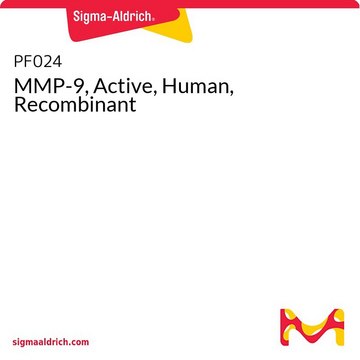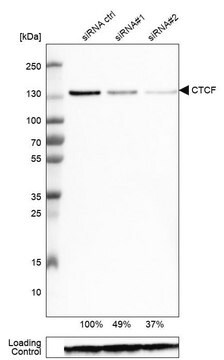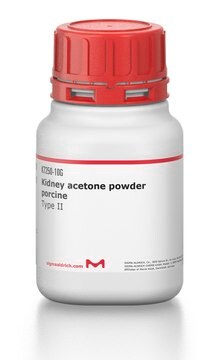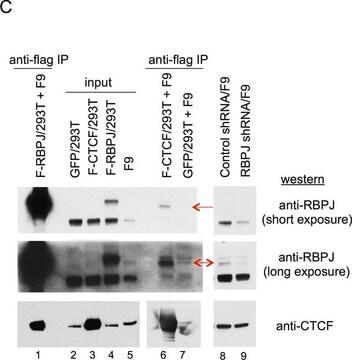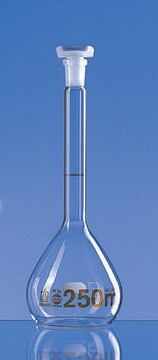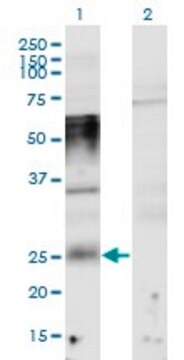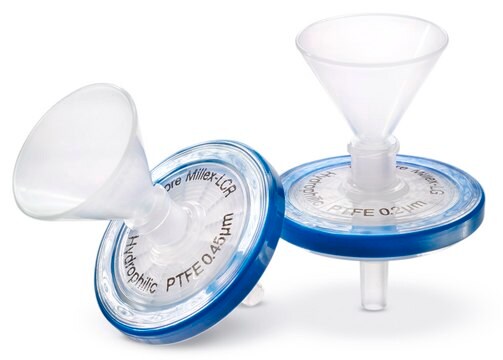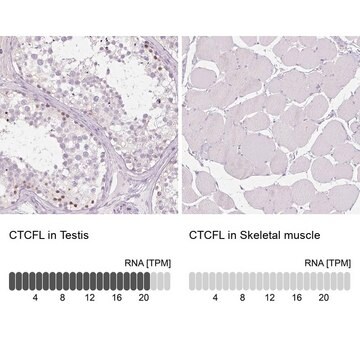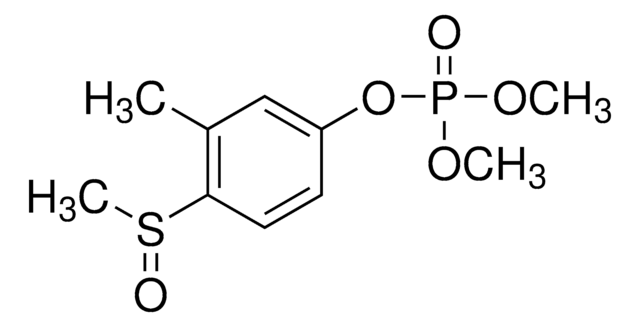17-10044
ChIPAb+ CTCF - ChIP Validated Antibody and Primer Set
clone 1.2.1.5.4, from mouse
Synonym(s):
11 zinc finger transcriptional repressor, 11-zinc finger protein, CCCTC-binding factor, CCCTC-binding factor (zinc finger protein), CTCFL paralog, transcriptional repressor CTCF
About This Item
Recommended Products
biological source
mouse
Quality Level
antibody form
purified immunoglobulin
clone
1.2.1.5.4, monoclonal
species reactivity
human
manufacturer/tradename
ChIPAb+
Upstate®
technique(s)
ChIP: suitable
ELISA: suitable
dot blot: suitable
immunohistochemistry: suitable
immunoprecipitation (IP): suitable
multiplexing: suitable
western blot: suitable
isotype
IgG1κ
NCBI accession no.
UniProt accession no.
shipped in
dry ice
Gene Information
human ... CTCF(10664)
General description
The ChIPAb+ CTCF set includes the CTCF antibody, a negative control antibody (normal mouse IgG), and qPCR primers which amplify a 165 bp region of human H19 internal control region. The CTCF and negative control antibodies are supplied in a scalable "per ChIP" reaction size and can be used to functionally validate the precipitation of CTCF-associated chromatin.
Specificity
Immunogen
Application
Sonicated chromatin prepared from HeLa cells (1 X 106 cell equivalents per IP with 15 min fixation) were subjected to chromatin immunoprecipitation using 2 µg of either Normal Mouse IgG or 2 µg of Anti-CTCF and the Magna ChIP G Kit (Cat. # 17-611).
Successful immunoprecipitation of CTCF associated DNA fragments was verified by qPCR using ChIP Primers, Human H19 ICR as a positive locus, and a representative published negative locus (Wendt, K.S., et al., 2008) (Please see figures). Data is presented as percent input of each IP sample relative to input chromatin for each amplicon and ChIP sample as indicated.
Please refer to the EZ-Magna ChIP A (Cat. # 17-408) or EZ-ChIP (Cat. # 17-371) protocol for experimental details.
Western Blot Analysis:
Representative lot data.
K562 cell lysate was resolved by electrophoresis, transferred to PVDF membranes and probed with Anti-CTCF, clone 1.2.1.5.4 (1 μg/mL).
Proteins were visualized using a Goat Anti-Mouse conjugated to HRP and a chemiluminescence detection system (Please see figures).
The following molecular weights have been reported in the literature: 180 kDa (CTCF-180), 130 kDa (CTCF-130), 82 kDa (CTCF-82), 70 kDa (CTCF-70). See Klenova, E.M., et al, (1997) Nucleic Acids Res. 25, 466–473 and Torrano,V., et al, (2006) Journal of Cell Science 119, 1746-1759) for additional details.
Please see molecular weight section for additional information.
Quality
Sonicated chromatin prepared from HeLa cells (1 X 106 cell equivalents per IP with 15 min fixation) were subjected to chromatin immunoprecipitation using 2 µg of either Normal Mouse IgG or 2 µg of Anti-CTCF and the Magna ChIP® G Kit (Cat. # 17-611). Successful immunoprecipitation of CTCF associated DNA fragments was verified by qPCR using ChIP Primers Human H19 ICR (Please see figures).
Please refer to the EZ-Magna ChIP A (Cat. # 17-408) or EZ-ChIP (Cat. # 17-371) protocol for experimental details.
Target description
Note: Poly(ADP-ribosyl)ated isoform, C-terminal truncation, or sumoylation will cause variable migration of CTCF protein on SDS–PAGE, which may present CTCF with different molecular weight on Western Blot. Modifications are dependent on cell type and growing condition.
The following molecular weights have been reported in the literature: 180 kDa (CTCF-180), 130 kDa (CTCF-130), 82 kDa (CTCF-82), 70 kDa (CTCF-70). See Klenova,E.M.,et al, (1997) Nucleic Acids Res. 25, 466–473 and Torrano,V,et al, (2006) Journal of Cell Science 119, 1746-1759) for additional details.
Physical form
Normal Mouse IgG. Two vials containing 25 µg purified IgG in 25 µL storage buffer containing 0.1% sodium azide. Store at -20°C.
ChIP Primers, Human H19 ICR. One vial containing 75 μL of 5 μM of each primer specific for human H19 internal control region. Store at -20°C.
FOR: CCC ATC TTG CT GACC TCAC
REV: AGA CCT GGG ACG TTT CTG TG
Analysis Note
Includes negative control mouse IgG antibody and primers specific for human H19 ICR.
Legal Information
Storage Class Code
10 - Combustible liquids
Certificates of Analysis (COA)
Search for Certificates of Analysis (COA) by entering the products Lot/Batch Number. Lot and Batch Numbers can be found on a product’s label following the words ‘Lot’ or ‘Batch’.
Already Own This Product?
Find documentation for the products that you have recently purchased in the Document Library.
Our team of scientists has experience in all areas of research including Life Science, Material Science, Chemical Synthesis, Chromatography, Analytical and many others.
Contact Technical Service